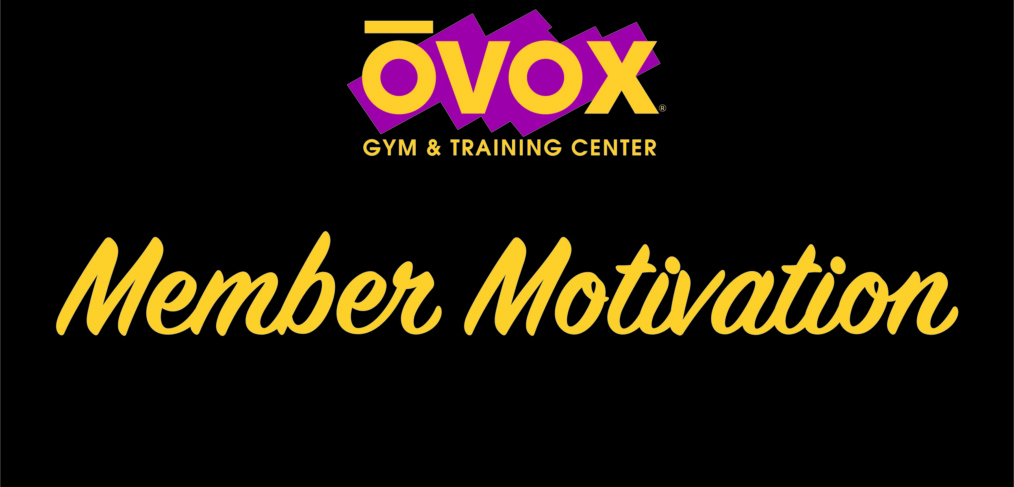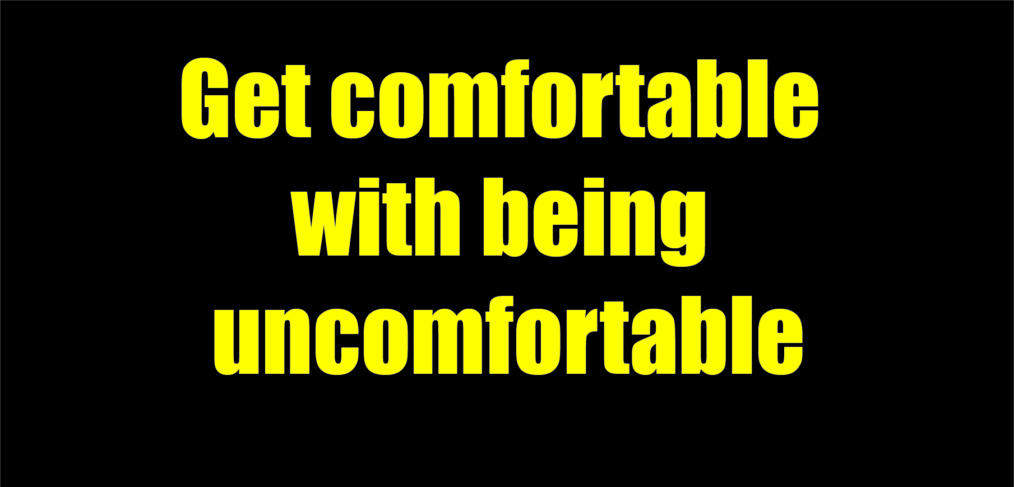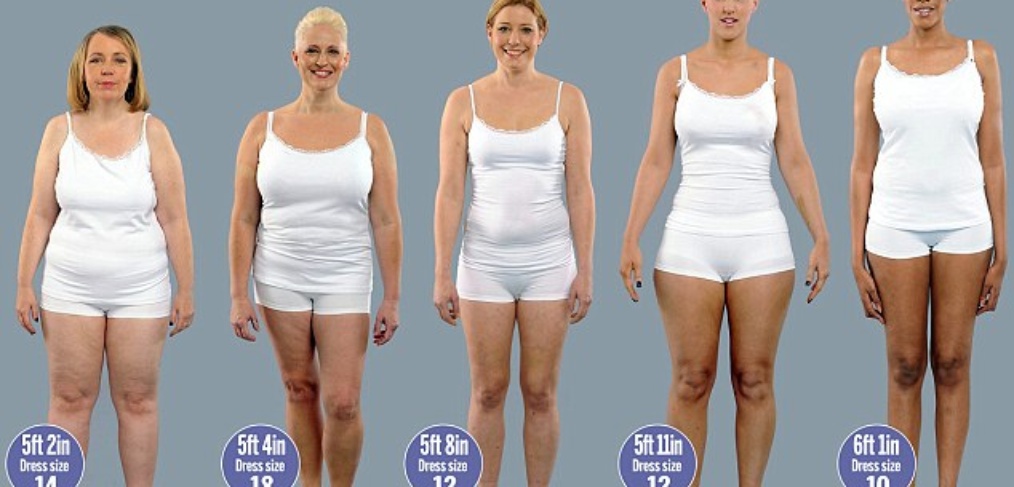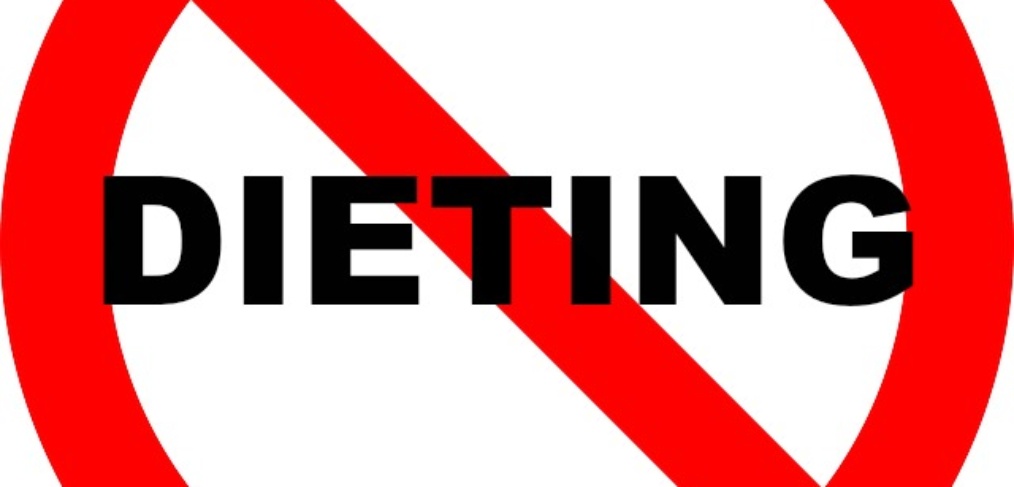Hi OVOX Family,
I’d like to tell my story…
I am a Senior and a recent widow. Besides everything I did to try to carry on, I decided to join a gym. I figured it would give me a reason to get up, get dressed, and get out of the house. Eventually, I settled on YOUR gym. At first it was not easy to get back into daily exercise and learning new equipment, but I did it… and it seemed to get easier over time. That was months ago. Now I’m fully committed to attending at least 5 mornings a week. I have to do it! Your wonderful front desk teams happily greet me by name and look for me when I’m not there! Those hellos are my first greetings of the day! Couple that with meeting some wonderful, motivating attendees and I’m here to stay! I tell this story because this gym has become the place where I exercise my body, my brain, and my will power. And I contemplate it all in your wonderful clean, warm sauna! You keep your facility so beautifully that I’m encouraged to do the same for myself.
Way to go, OVOX!
Barbara
Let’s Talk About Active Isolated Stretching
Active Isolated (AI) stretching can make a better athlete out of you. As we age, our muscles become increasingly inelastic. AI stretching can make substantial improvements in muscle elasticity, adding renewed life and spring to tired old muscles. AI stretching does what stretching was suppose to do. It reduces your work load in most sports by removing tightness so you can swing your limbs more freely. It transports oxygen to sore muscles and quickly removes toxins from muscles, so recovery is faster. AI stretching works as a deep massage technique because it activates muscle fibers during stretching.
Here is how Active Isolated (AI) Stretching works:
To excel in any sport, your goal should be to put all the fitness pieces in place – health, strength, cardiovascular fitness ( endurance), and flexibility. The great irony of being a bodybuilder is that you may have only ONE of those components: strength. You look great, but you may be in lousy shape. Having all the components will ensure you’ll last longer, both in the gym and in your life.
As the new year quickly approaches, I believe it’s a good time to talk about stepping outside of your comfort zone. It’s human nature for us to choose the easy route and do what we are comfortable with, like waking up and taking a hot shower. That feels good, doesn’t it? What if I told you to take a cold shower? You’d probably laugh and brush it off. What if I told you to work out every day this week? You’d probably come up with some excuses like you have no time, but the thing is I never said your workout needed to be an hour long. You see, we instantly think of how difficult it would be to do something uncomfortable so we make up excuses. Now what happens if we step outside of our comfort zone? I always hated running because let’s face it, it’s hard. Fast forward to today and I’m signed up to run a marathon, aka 26.2 miles! I’m doing this because I wanted to step outside of my comfort zone. I wanted to do something that would be mentally and physically challenging, something that I would have to work hard for. Let me tell you, to this day I am very uncomfortable when I’m running (especially my long runs), but pushing myself has taught me a lot. Pushing through all of the days of being uncomfortable has only made me stronger. It has made me comfortable with being uncomfortable. So, while you’re coming up with your New Year’s Resolutions, think of things that make you uncomfortable. Pursue those things and don’t stop doing it until you’re comfortable with being uncomfortable.
-Dan
www.ovoxmorganville.com/trainers/dan/
Are 6-Pack Abs A Myth?
Are you chasing the washboard abs of the gods by chasing mythical information? Just like a unicorn is fake, so are these tips about abs!
Paul Starnes NASM CPT, FNS. CES
Everyone wants flat abs that you can iron your shirt on. Many have the false idea that to get abs you only have to do ab exercises. Let’s get right down to it, godly abs are not as hard as everyone makes it out to be. However, they do require dedication, commitment and healthy eating. I’m going to debunk some of the myths out there.
- Some Guys Just Have The Best Genetics
First of all, this is the biggest excuse out there. Stop blaming your genetics for why you don’t have or just can’t see your abs. Genetics determine how your six-pack looks, not whether you get one or not. Hard work determines the latter. It boils down to one thing, and one thing only….how bad do you want it? Eating a proper diet with dedication and commitment will guarantee you 100% abs. Why is that? Well, because everyone has abs, but they are either stretched out from a sedentary lifestyle or, they are just covered by a layer of abs.
- You Can Outwork A Bad Diet
LOL! If you believe this then I’ve got a habitable planet in outer space that I want to sell you. If you’re pounding down beers on happy hour or waiting to Friday to party your face off and get “hammered” I’ve got news for you guys, abs aren’t going to happening. You have to be smart about this; calories your body doesn’t expend it stored as fat. And where do those calories go? That’s right, for many of us it covers up the abs.
- This Will Burn Your Belly Fat!
Ok, here’s a BIG fact about the human body. You CAN’T under ANY circumstances just target belly fat. That’s not how the body works. It’s not possible to spot reduce fat on specific parts of the body. When you lose body fat it will come off of the whole body. Notice I said BODY fat levels, not AB fat levels. Your body will only let your abs show when you lose enough body fat all over your body.
- 4 Pack, 6 Pack, 8 Pack?
Remember I said everyone has abs, genetics just determine how they look. Don’t get upset if you can only see a 4 pack but the friend can see a 6 pack.
- Train your abs correctly
When the body fat lowers, abs will show. Let’s train the abs so they look their best when the fat comes off. The abs develop well with TUT. TUT = Time Under Tension. Slow and steady wins the race and protects against spinal and back injury. Now, you don’t have to go at a snail’s pace, but work at a moderate to slow pace for maximal gain. Using momentum for abs exercises, any exercise really, will limit your muscle building potential.
- Give Your Abs A Rest Day
This one is a bit tricky. You can work your abs everyday, but you have to be careful. It’s one of the most important muscles in protecting the spine. What you can’t do is high volume workouts on the abs everyday. It’s ok if you want to make planks your daily exercise routine finisher and maybe throw in some variations. But, it’s not ok to do billions of crunches, leg raises and windshield wipers every day. Gives your abs rest like every other muscle.
I hope this information helps you if you were making any mistakes on your quest for abs. Now go out there and get those abs that will make you look like a greek god!
Remember, form over function, grind your way to success and NEVER let anyone tell you what’s possible for you in life! Go get it!
-Paul
“I don’t know what you’re up against, I don’t know what you’re facing. But here’s what I do know: You’ve got something special, you’ve got greatness in you, and I know it’s possible that you can live your dream.” Les Brown
Before I dive into this awesome supplement, I want to ask all of the readers of this post, if you can only take 5 supplements what would they be? Magnesium Glycinate rarely appears under essential supplements for strength athletes or just the general public. That’s really sad news since most Americans are deficient in magnesium. Through research I learned it’s actually the second most common deficiency in developed countries after Vitamin D. To let you in on a little secret, it’s one of the most important nutrients for strength athletes. It might be helpful to think of Magnesium Glycinate as the relaxation supplement. It’s shown benefits like improve sleep quality, stress levels, blood pressure, and it even relaxes the muscles within the digestive tract. Not all forms of magnesium’s are the same. I will give you the benefits of this form magnesium, Magnesium Glycinate, which I take daily, helps with anxiety and helps calm my runny mind so I can settle down and attempt to overcome this insomnia of mine. An athlete’s body uses magnesium to sustain muscle contractions and deliver oxygen to working muscles. Magnesium Glycinate as I said previously is known well for its calming effects on the body and plays a part in the recovery aspect after a tough workout. It’s also used up in energy production, and boosts performance by lowering accumulation of lactic acid in the body. At the same time, magnesium is also lost through sweat so if your training hard in hot and humid environments you may need an increased supply of magnesium. We now carry Magnesium Glycinate on our supplement rack in the gym. Want to know my top 5 supplements everyone training should take? Make sure to take advantage book a free consultation with me and also come check out our supplement brand at OVOX, TNT supplements, a brand you can trust. To book your appointment, click this link https://www.ovoxmorganville.com/nutrition-progamming/
-Marcos, OVOX Nutritionist
Let’s talk Nutrition. I hear people all the time, “I’m counting Macros”, “I’m low carbing”, etc., etc.. Today, I will address macro counting and protein calculation. People will use a macro calculator, or they will calculate how many grams of protein they need per pound of body weight to determine what they should eat. Let me tell you a few problems with this. First, how much protein do you really need and how much should you be having? Eating too much of anything is not good. The Recommended Daily Allowance (RDA) says .36 grams of protein per pound of body weight a day, elevated to .45 grams per pound a day for general fitness. The Academy of Nutrition and Dietetics (AND), American College of Sports Medicine (ACSM), American Dietic Association (ADA), Dieticians of Canada (DC) all say the range is .55-.77 grams per pound a day depending on fitness activity. The International Olympic Committee (IOC)says .55-.82 grams per pound a day. And Internet “experts” who know more than all of these organizations say 1.25-1.5 grams per pound a day. *Side note, for all the gym goers that feel they train harder than an Olympic Athlete and need more than they do….um, they don’t 🙂 I trained one in the late 80’s.
So right off the bat we have a problem. From a government agency, to reputable sports organizations to internet influencers; who should you listen to? But now let’s look at even a bigger problem. Even if you are convinced you know how many grams of protein to have per pound of body weight; it makes no sense to base you’re eating plan from this. Look at the attached picture. Beside the fact that all of these women are wearing white, they have something else in common. They all weigh the same. Different dress size, different height, different age, different body composition, but the same weight. It makes no logical sense they should be eating the same amount of protein based on body weight.
When determining caloric needs and protein needs, body weight is a piece of the puzzle; but there are many more pieces. Age, gender, height, body composition, activity level, current caloric baseline, required basal metabolic caloric needs, food interactions, are among the various pieces of the puzzle that should be considered when designing a “lifestyle diet” that you can stick to and thrive on. Not a “short term diet” that may provide quick results but will fail over time and possibly cause health issues.
As you can see there are many things to consider when designing a smart lifestyle plan. We make nutrition simple for you. Our Nutritionist’s 1) calculate your caloric and nutrition needs 2) our Nutritionist’s work around YOUR food preferences and lifestyle 3) our Nutritionist’s plan your meals 4) your plan is delivered to your phone via our app 5) you meet with your Nutritionist weekly to check progress and make adjustments.
Marcos & Amanda are our Nutritionist’s. Both Marcos & Amanda have a bachelor’s degree in Nutrition Science and are both trainers and fitness instructors. They understand how to connect all the dots of nutrition, fitness, and your goals.
Meet with Marcos and Amanda today for a free consultation. They will review your current eating and explain in more detail how our nutrition program works. Don’t wait for your New Year’s Resolution….start today by filling out the appointment form https://www.ovoxmorganville.com/nutrition-progamming/
Have a great day everyone
-stu
The Power of Pain
Chronic conditions- which patients report as lasting more than three months, often manifest over an extended period and cause problems for several years.
For example, habits create posture, which over time becomes structure that ultimately affects function, movement, and performance.
I’ve seen this scenario before: A client, who has been working at a desk job for decades, comes to me with low-back pain. They think the pain is the result of their bending over the wrong way once. But in reality they have been setting themselves up for a lumbar disc herniation due to poor posture. Bending at their lumbar spine ended up being their body’s path of least resistance—and its weakest point—so it finally reached a breaking point.
Unfortunately, the client usually won’t seek professional help until the condition creates a severe level of pain. At that point, the brain and the body’s ability to function have diminished to a decompensated condition, and normal motor control can no longer be restored by conventional intervention.
When disease or trauma strikes, and recovery is delayed, chronic nociceptive stimuli, such as pain, stiffness, numbness and tingling, weakness, and other signs or symptoms can result in impaired cortical relay of motor output and reduced activity of painful muscles. Movement and function become limited because the sensory- motor interaction is inhibited.
Effective interventions
The clinical consequence of remedying such conditions is to stop trying to restore motor control in cases of patients with chronic conditions. Instead, consider interventions aimed at kinesthetic guidance can be translated into behavior 30 times faster than visual guidance and several thousand times faster than audio guidance.
There are tools to help provide such kinesthetic guidance and address nociception-motor interaction. Applied appropriately, these can provide a novel somatosensory input to positively affect motor output. One can communicate with the somatosensory system through the skin and fascia, which is the richest sensory organ because it contains smooth muscle-like cells embedded within the fascia’s collagen fibers.
Kinesiology tape, which provides support while allowing full range of motion, is another tool that can be applied to the skin to provide kinesthetic guidance and normalize tone in the presence of movement dysfunction. Taping can decrease pain, unload tissue through decompression, and provide a novel stimulus to improve body awareness. Kinesiology tape can help key motor control centers of the body regain stability.
Foam rollers, stretch bands, and balls are ubiquitous mobility tools that can manipulate the myofascial system to normalize soft-tissue tone and remedy chronic conditions. These tools can address restrictions in motion that are seen at the joint and soft-tissue levels. Rolling, banding, and myofascial manipulation with balls can also help the body regain motion.
Look for our upcoming complimentary Kinesio-Taping and Movement sessions!!!
GET BACK TO DOING WHAT YOU LOVE- MOVE MORE, MOVE BETTER!!!!
Get Taped!
Contact Cathy for your free movement assessment!
Why Not To Keto or Diet at all.
I hate “dieting”, and it’s the type of mentality I have my clients break away from. There’s too much researched information, and we know too much about food to have to cave into our old dieting ways. Creating a healthy lifestyle does not come from restrictions. It’s disappointing to see that we as a society are still depriving ourselves from the nutrition our body needs to follow a popular “diet”. We coy away from real wholesome, healthy foods.
By now, you’ve probably heard all about the famous ketogenic diet, the high-fat, low-carb eating style everyone’s talking about. And while the benefits of keto are pretty well known for weight loss and a suppressed appetite, the downsides are usually minimized by keto advocates. It is obvious that the positive aspects of a ketogenic diet are spoken about much more than the drawbacks. The ketogenic diet was introduced in the 1920s as a way to treat epilepsy; not for weight loss. What’s more, ketosis (the goal of keto, a state where the body uses fat for energy instead of carbs) is something seen in people during periods of starvation including in people with anorexia nervosa. The body is deprived of carbohydrates and thus has to turn to ketone bodies as a fuel source. People really need to understand the weight loss from this diet is generally not from eliminating carbs. The weight loss is water loss and from eliminating processed foods that a healthy balanced meal plan shouldn’t have anyway. Another thing to understand is when you go on a “diet”, ANY diet can make the scale down. Low carb, high carb, and even the “Twinkie diet”….all can result in initial weight loss. But that doesn’t mean these diets are healthy, sustainable long term, or beneficial for your activity level.
In regard to Keto, the first major drawback is the fact that we really don’t have any long-term research about how it effects keto followers. I have a Bachelor’s Degree in Nutrition and I have researched this diet which personally I have tried in the past. I know first-hand of the foreseeing flaws. From brain fog, unstable hydration levels, negative impact on athletic performance, the keto flu, and funky breath are just a few of the long-term side effects. That’s why I’m a huge advocate of a well-balanced nutritional intake. If you really want to stop “dieting” and start living a healthy optimized lifestyle, fill out a request for a free 30 minute consultation with me https://www.ovoxmorganville.com/nutrition-progamming/ . I have years of experience guiding anyone looking to optimize their health whether it’s weight loss, improve performance or bodybuilding goals.
Marcos, ŌVOX Nutrition Coach





